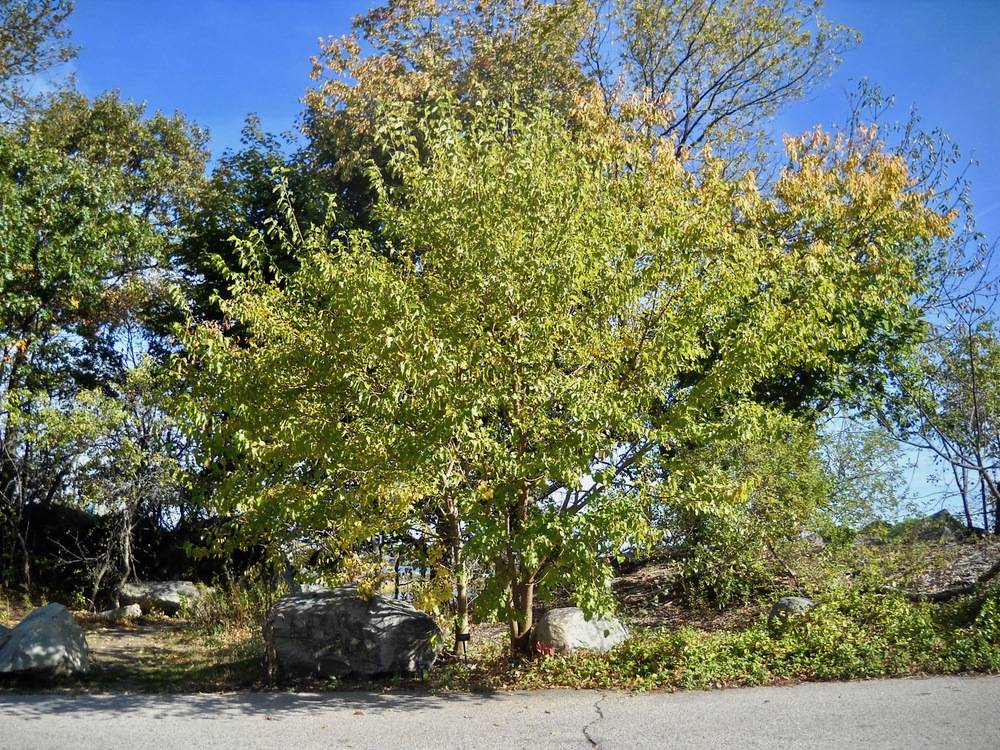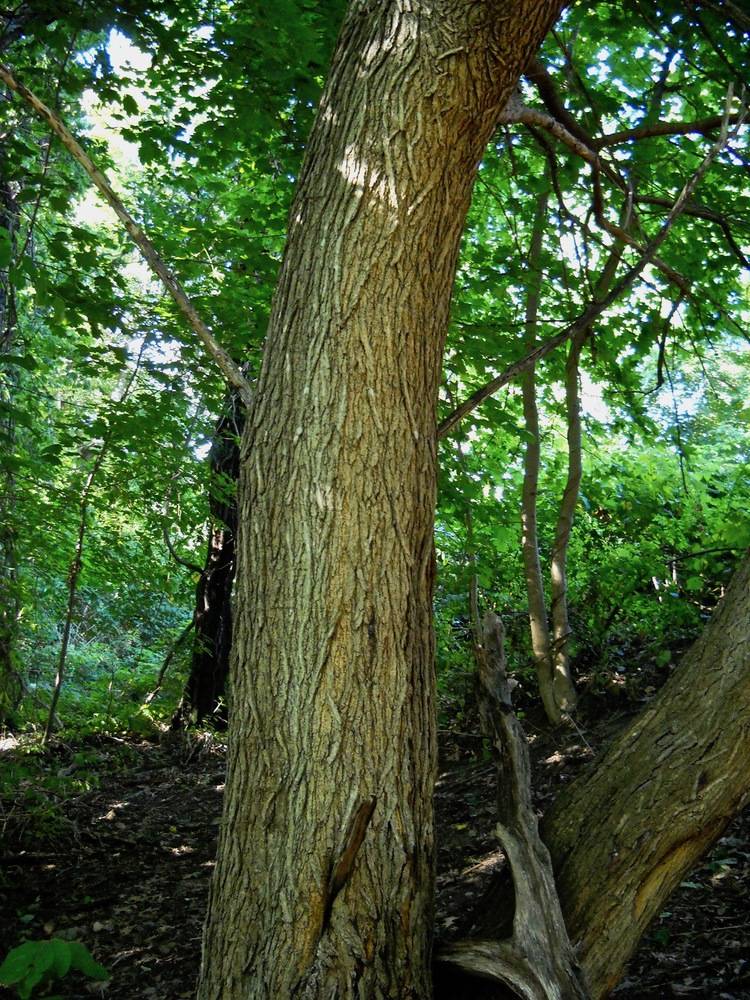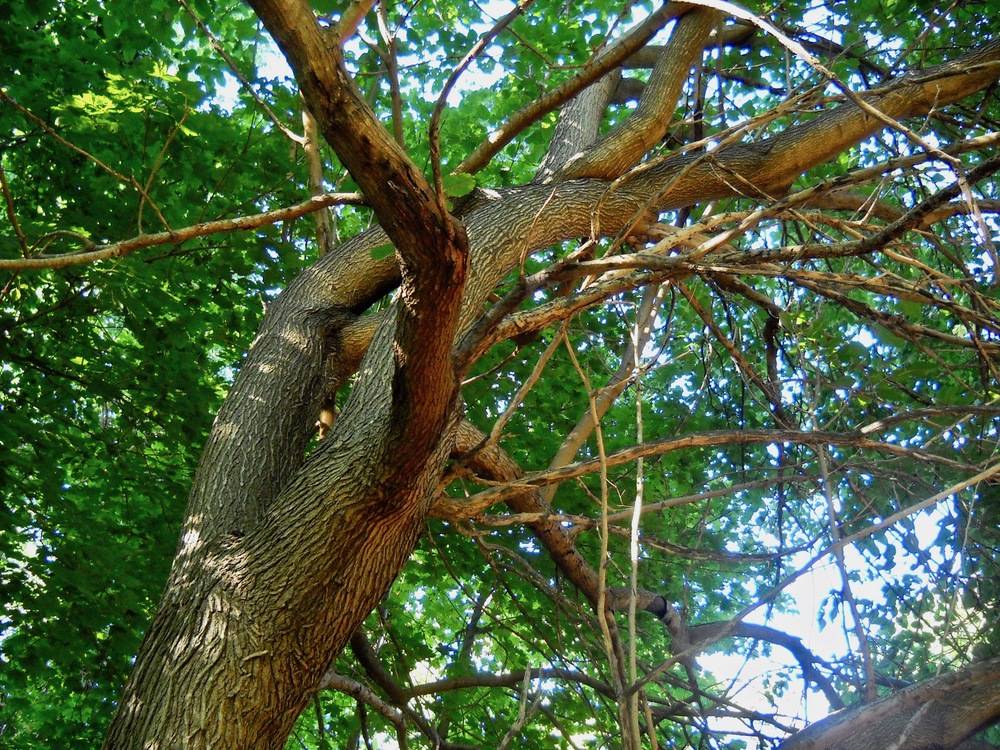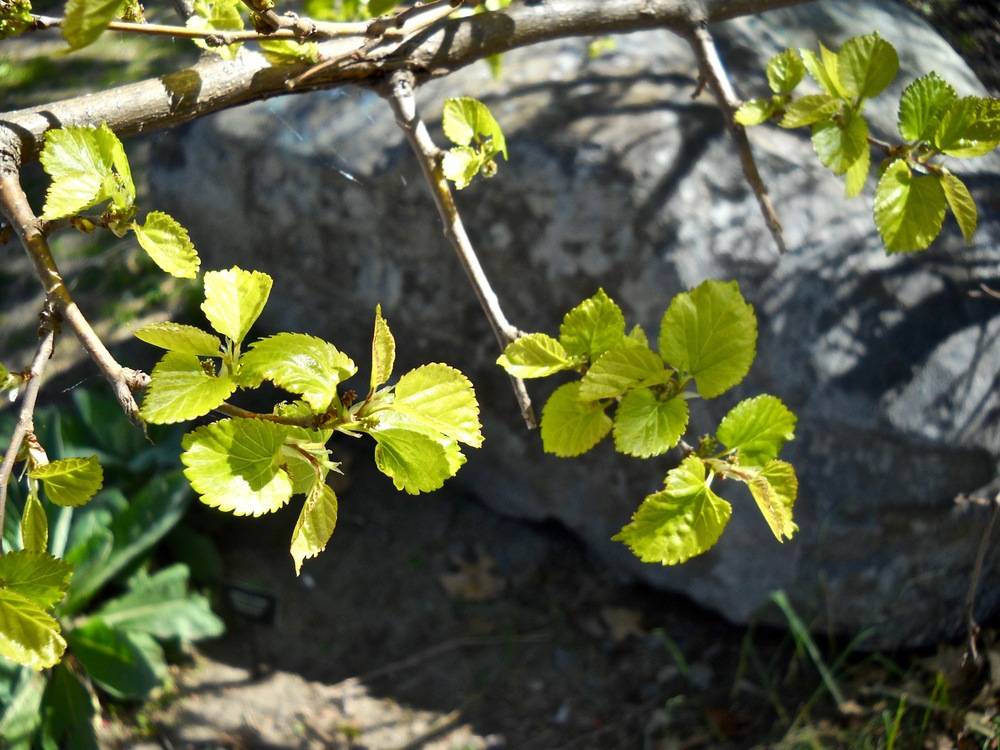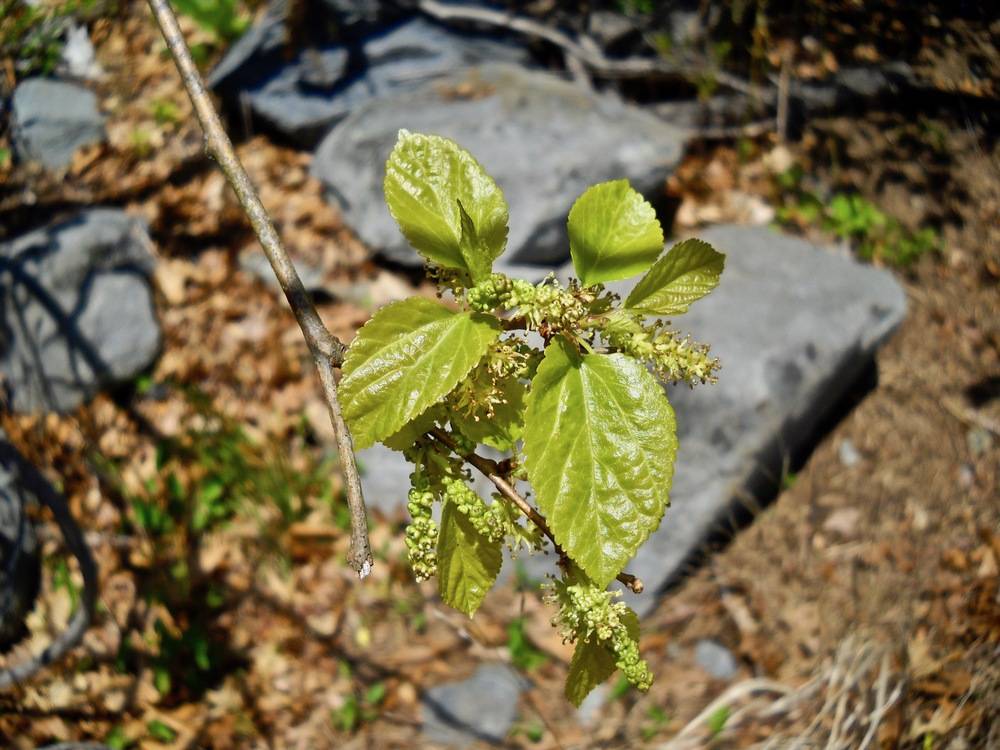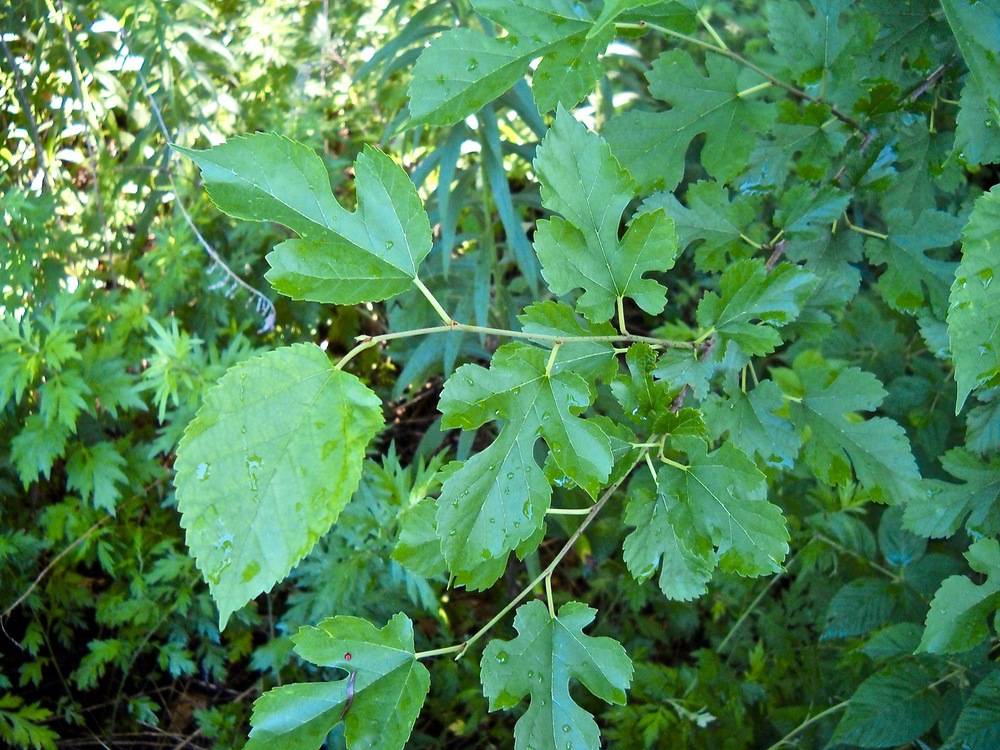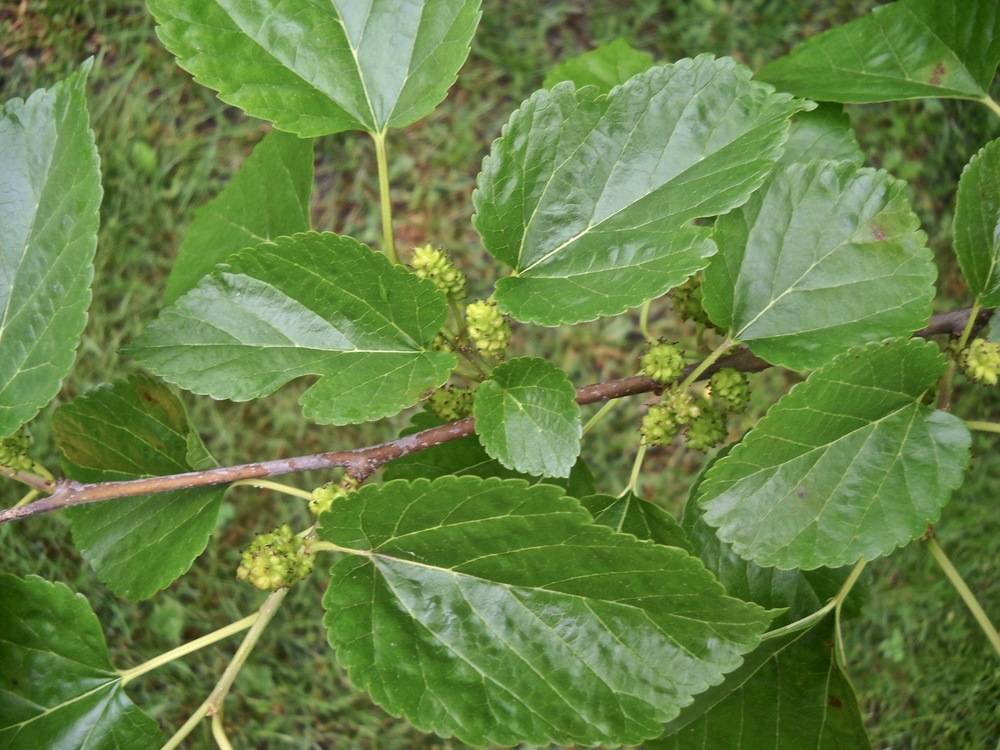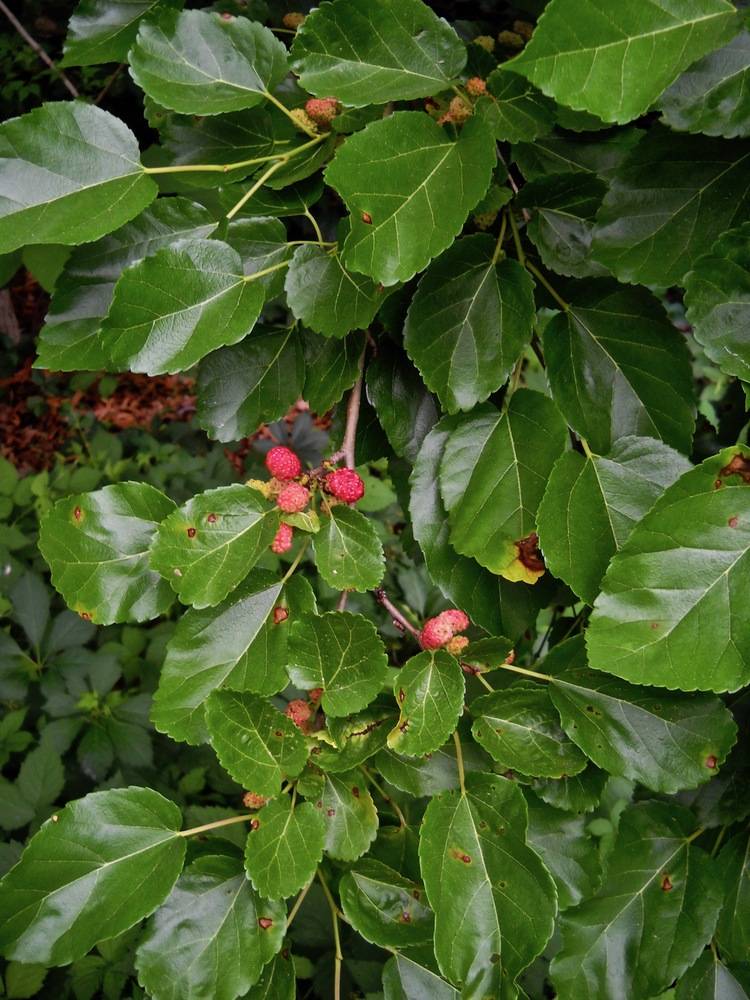white mulberry
Indigenous to China, white mulberry trees have been cultivated there for over four thousand years for leaves to feed silkworms. It was first introduced to colonial North America in the early 1600's in an attempt to start a silk industry. This effort ended by the early 1800's as plantations were either killed by cold northern winters or by disease in the south. However, it grows readily in disturbed habitats and has become naturalized across temperate North America.
Adult trees can be found along all the mainland trails of Salter Grove, usually on the sunny edges of woodland vegetation. Trees growing in shaded woodland tend to have taller trunks. In sunny habitat, the trunk is short and thick with long sprawling branches that result in a bushy crown as exemplified by the two trees on the eastern edge of the parking lot.
It is a dioecious species with male and female flowers found on separate trees. The apetalous flowers are crowded on small spikes called catkins. Male flowers are exceptional in being able to propel pollen at half the speed of sound or 380 miles per hour!
Not to be outdone, female flowers develop into small fruits that contain 22 seeds each on average, suggesting that one tree can produce 20 million seeds, setting yet another impressive record for the plant world. Fruits do not stay on the tree for long. They are harvested by birds and humans even before they are fully ripe.
For more information:
https://gobotany.nativeplanttrust.org/species/morus/alba/?pile=woody-angiosperms
https://www.fs.fed.us/database/feis/plants/tree/moralb/all.html
https://link.springer.com/article/10.1007/s00497-005-0018-9
https://en.wikipedia.org/wiki/Morus_alba
https://www.oardc.ohio-state.edu/weedguide/single_weed.php?id=77
https://www.invasive.org/alien/pubs/midatlantic/moal.htm

